
- HOME PAGE
- TOURS LIST
- SITE INDEX
- TOUR SUMMARY
-
TOUR BLOG
DAY 1 - BANGKOK/NAKHON LAMPANG, 31 JANUARY 2013 DAY 2 - NAKHON LAMPANG, 01 February 2013 DAY 3 - NAKHON LAMPANG/PAI, 02 February 2013 DAY 4 - PAI, 03 February 2013 DAY 5 - PAI/MAE HONG SON, 04 February 2013 DAY 6 - MAE HONG SON, 05 February 2013 DAY 7 - MAE HONG SON, 06 February 2013 DAY 8 - MAE HONG SON/MAE SARIANG, 07 February 2013 DAY 9 - MAE SARIANG/MAE SOT, 08 February 2013 DAY 10 - MAE SOT/KAMPHAENG PHET, 09 February 2013 DAY 11 - KAMPHAENG PHET, 10 February 2013 DAY 12 - KAMPHAENG PHET/BANGKOK, 11 February 2013Day 2, Friday 1st February - Nakhon Lampang
Lampang overstay..... The first thing I notice this morning is the cool air in Lampang much more comfortable than in Bangkok as I venture out to get a breakfast. There is not too much in the way of western style restaurants here but there is a wide range of Asian food besides more northern Thai style menus. I take pork and rice and a specialty desert but to not waste an opportunity, I again visit the railway station to witness the connection of an extra locomotive for a service to Chiang Mai over the difficult mountain section. Satisfied with that, I return to the guesthouse with a takeaway lunch. From here I'm expecting transport for afternoon sightseeing.
Not at the races..... The transport I was promised arrives just after 2 pm and I will have a couple of hours to visit Wat Phra That Lampang Luang which is the main tourist attraction in the area. I'm most fortunate since hiring the usual songtheaw would have proved expensive as this temple complex is 20 minutes or so outside the city. The temple is unassuming and signage apart from in the museum is in Thai only. Entry is free, but donations are encouraged as this temple still functions. Outside the temple complex are the usual souvenir stalls but in addition a row of richly decorated horse-drawn carriages await custom; another of Lampang's attractions.
Wat Phra That Lampang Luang..... Wat Phra That Lampang Luang (Temple of Lampang's Great Buddhist Relic) is an early Lanna-style (Northern Thai) Buddhist temple, one of the oldest religious structure in existence today in Thailand. Locally known as Wat Lampang Luang, this temple complex is located in Ampur Ko Kha, 20 kilometres west of Lampang.
The fame of the temple, and its preservation throughout the centuries is mainly due to the belief that Buddha once visited here about 2,500 years ago and donated a lock of his hair, which is now enshrined in the temple's chedi.
The temple itself is built on a mound, the site of an eighth century fortification, called a wiang, that guarded the routes to the feudal city of Lampang. The Viharn Nam Tam structure of this temple complex is believed to be the oldest surviving wooden religious building in Thailand dating back to the 16th century. The main gate of the temple was constructed in the late 15th century.
A pair of guardian lions and a steep naga stairway lead up to the impressive entrance gate. The main prayer hall, Viharn Luang, stands close inside the main entrance. At the back of the Viharn Luang sits a massive gilded ku (throne) sheltering the main Buddha image, known as the Phra Chao Lang Thong, cast in 1563. On either side of the ku are throne-like pulpits, sometimes used by monks but more often used to house other Buddha images on important ceremonial days. Behind the main prayer hall stands the 45-metre tall chedi. The chedi was originally decorated with copper and bronze sheets. Over the centuries, these have oxidized into a variety of green and blue shades.
Flanking the chedi on the south side is another prayer hall known as the Viharn Phra Phut, a small chapel built in 1802 with a beautifully carved facade. Behind the Viharn Phra Phut is a tiny tower-like structure, the Ho Phra Phuttabat that houses a Buddha footprint sculpture. This building is generally open only on important festival dates and may never be entered by women!
The two museums are of some interest. One houses the Phra Kaeo Don Tao, a supposed 'copy' of the Emerald Buddha and made at the same time but does not compare with the subtlety of the Emerald Buddha in Chiang Rai, and the setting doesn't do it justice. However, there is a wonderful 400-year-old scripture library and a display of local pottery, utensils and even weapons. In the sand covered yard stands an old Bhodi tree preserved with help of supports.
Nakhon Lampang..... Lampang city itself does not support mass tourism in the same way as its neighbour Chiang Mai and most tourists visit the city on a group tour. However, Central Plaza does support western style food restaurants and the usual hypermarkets and department stores can be found in the city. I ask to be dropped off in the city just to have a look around. From the clock-tower I venture down to the Wong River past a new temple construction richly decorated in white with mirrored tiles curiously named Wat Chiang Rai then back to the park area where I take a songtheaw back to the guesthouse about 3 kilometres away. In the evening I again wander to the train station really only to have dinner, this time a pork soup with a draft beer. By now there are few foreigners about; most have departed by train by now. I've enjoyed the Lampang experience and appreciated those who've opened to me in a warm and friendly way but tomorrow I intend to continue my journey north.
Next Page.
Lampang Province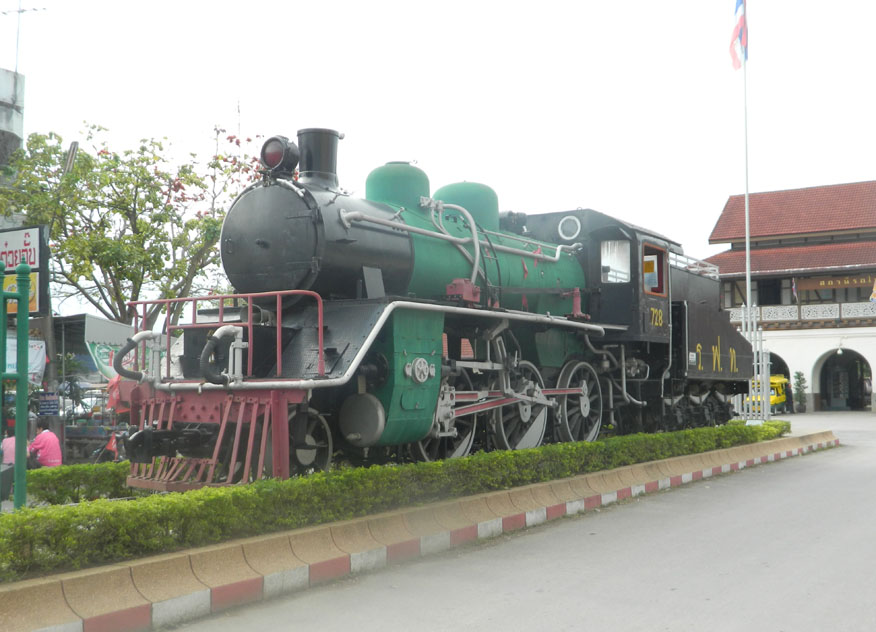
Preserved Locomotive at
Nakhon Lampang Railway Station

Nakhon Lampang Railway Station
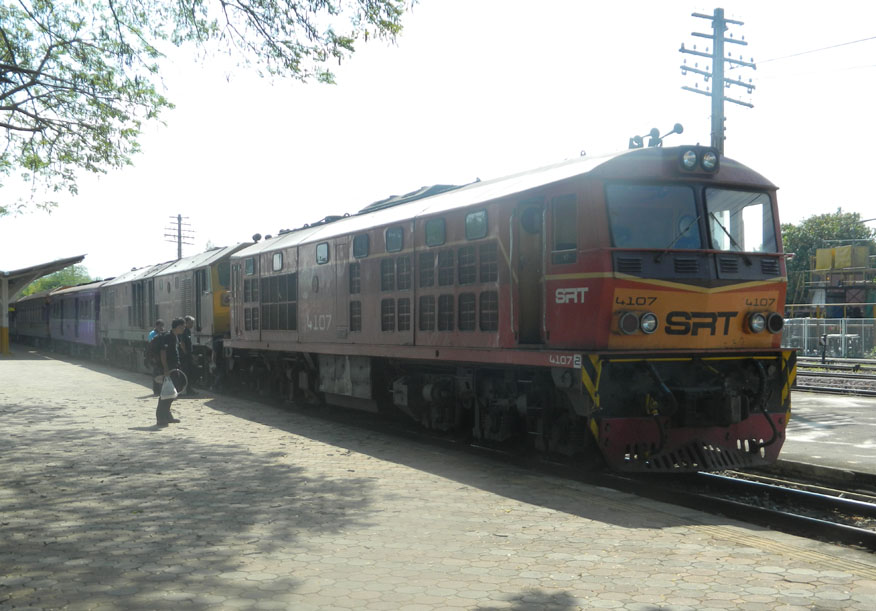
Connection of an extra Locomotives for the steep Section of Line to Chiang Mai
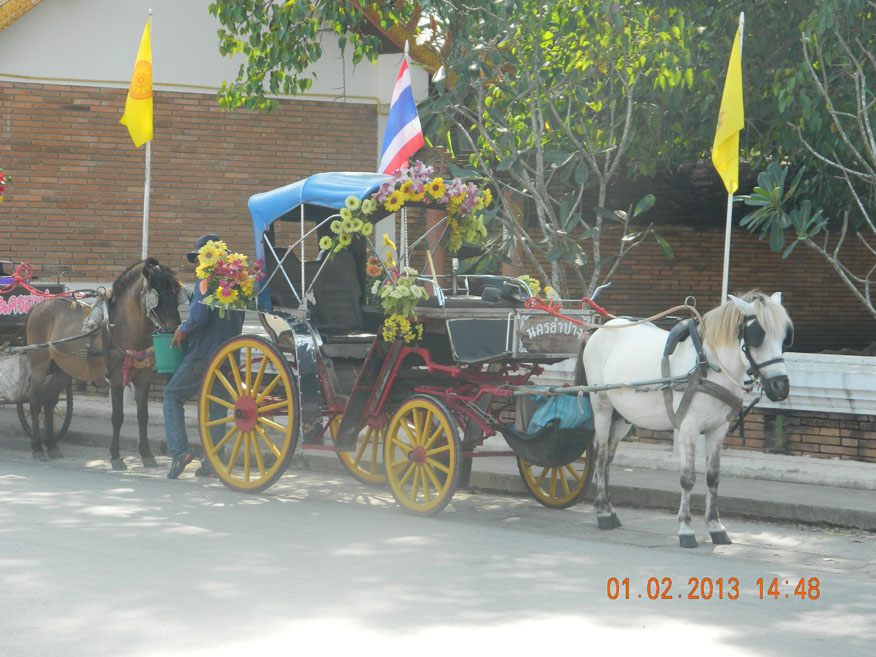
'Roht Mah' (horse carriage)
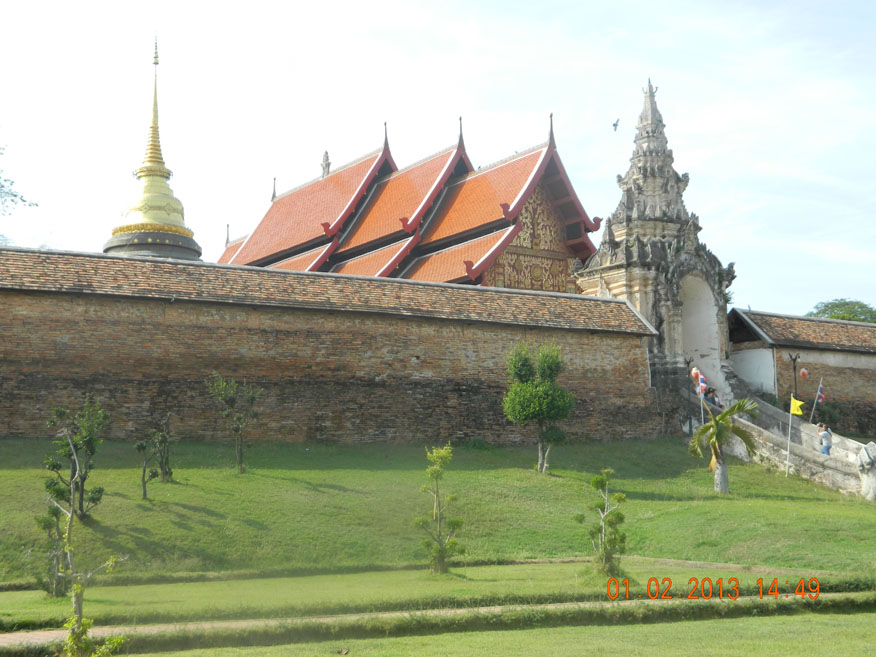
Wat Phra That Lampang Luang
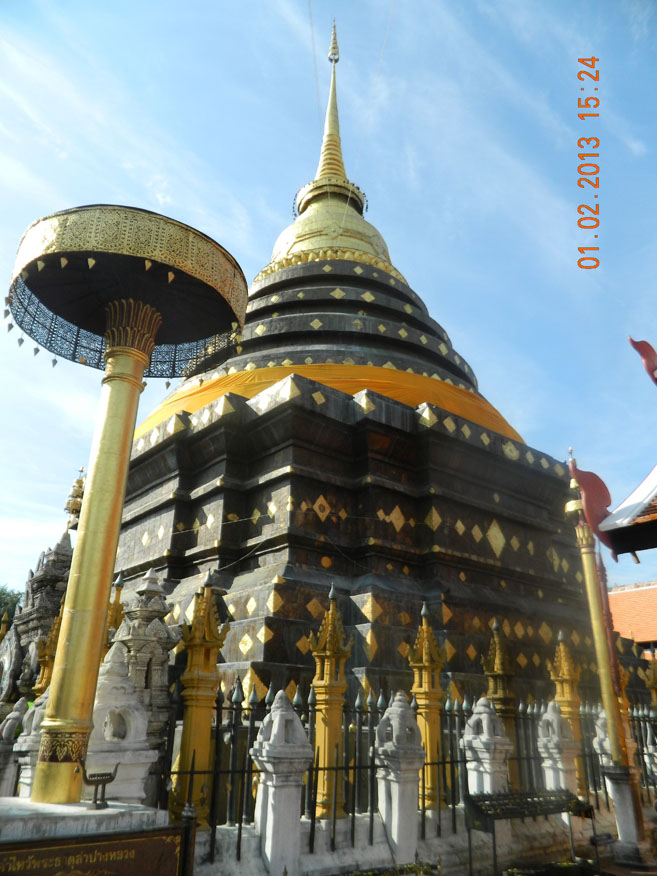
The main Chedi,
Wat Phra That Lampang Luang
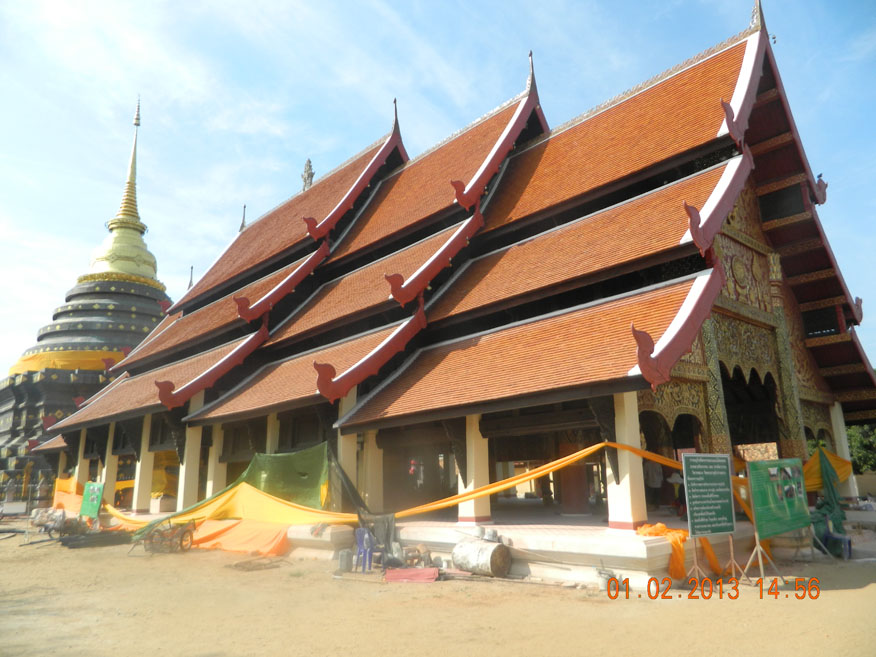
The main Prayer Hall, Viharn Luang
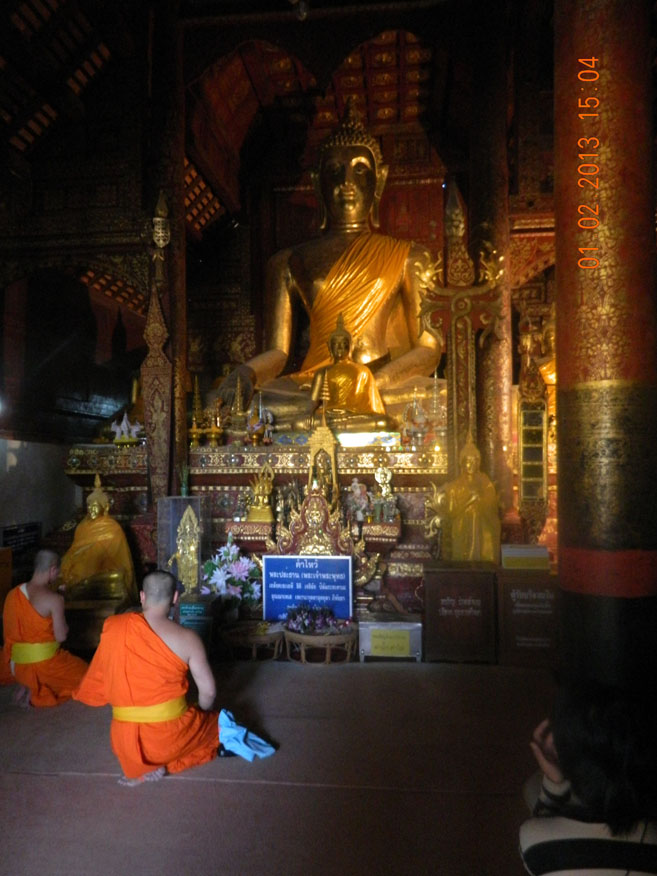
Buddha Image in Viharn Phra Phut,
Wat Phra That Lampang Luang
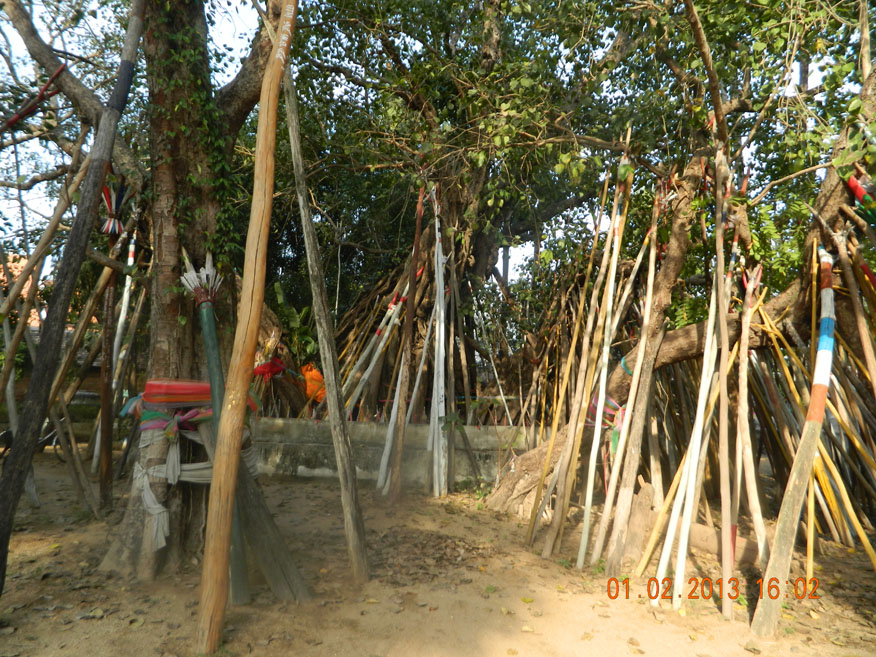
The ancient Bhodi Tree,
Wat Phra That Lampang Luang
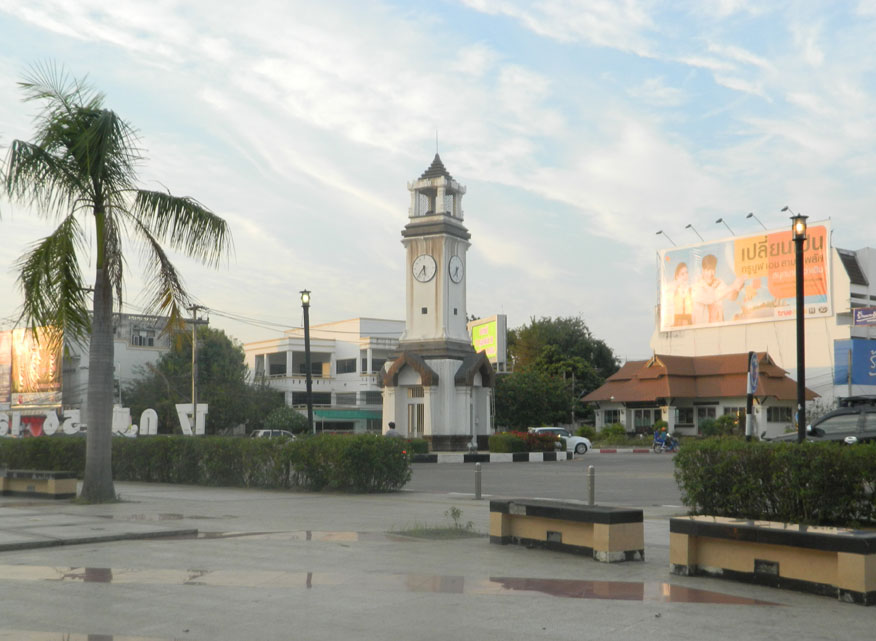
The Clocktower in the centre of Lampang
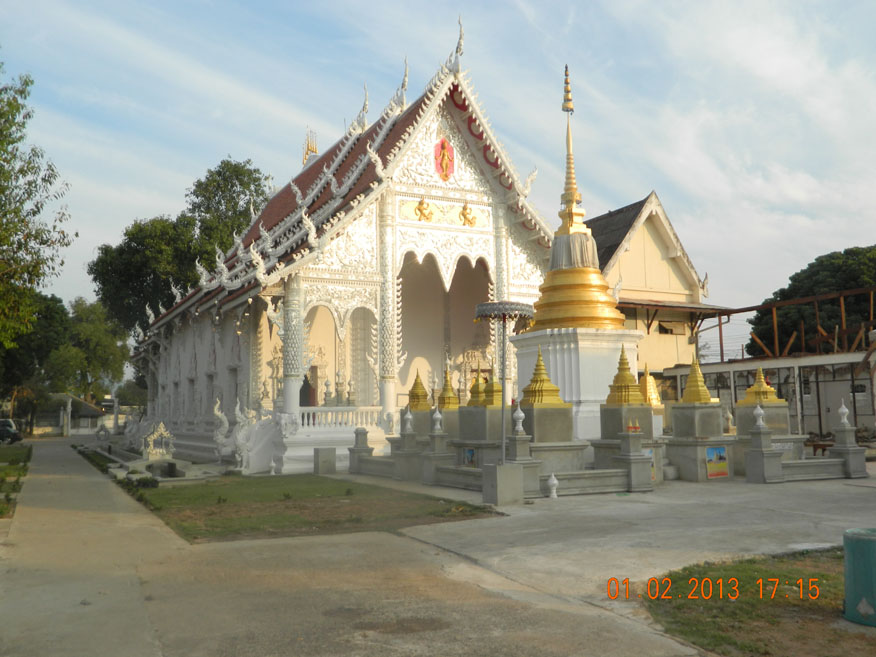
Wat Chiang Rai

view of the Footbridge over the Ping River